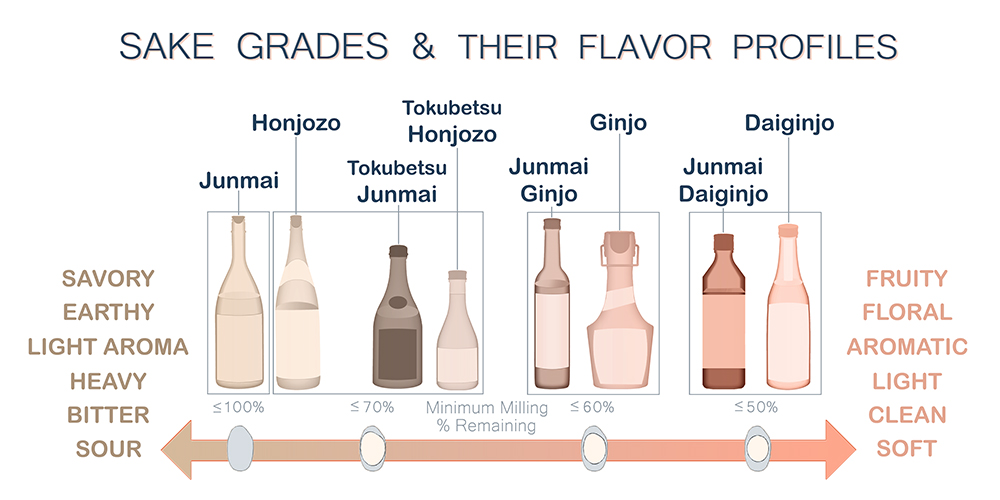The easiest way to tell what a sake will likely taste like is understanding grades. Every sake is given one. And the grade will provide some key information.
The grades are determined by the amount of rice polishing, and whether or not some neutral spirit was added.
Of the premium grades, only junmai has no minimum milling requirement for its rice. Honjozo,, which uses a small amount of added alcohol, has a minimum of 70% remaining. Both of these grades tend to be savory, earthy, less aromatic, and sometimes acidic.
Junmai and junmai ginjo require rice that has been milled to at least 60% remaining. They are fruitier and more floral. These two grades also tend to be lighter in body. Like honjozo, ginjo uses a small amount of added alcohol.
Finally, junmai daiginjo and daiginjo are the top level grades. At least half of the rice used to brew them must be milled away. They are generally the lightest, most aromatic, fruity, and floral sake. They’re often low in acidity.
All of these grades have many exceptions. But overall, they’re the best way to know what a sake will taste like.
